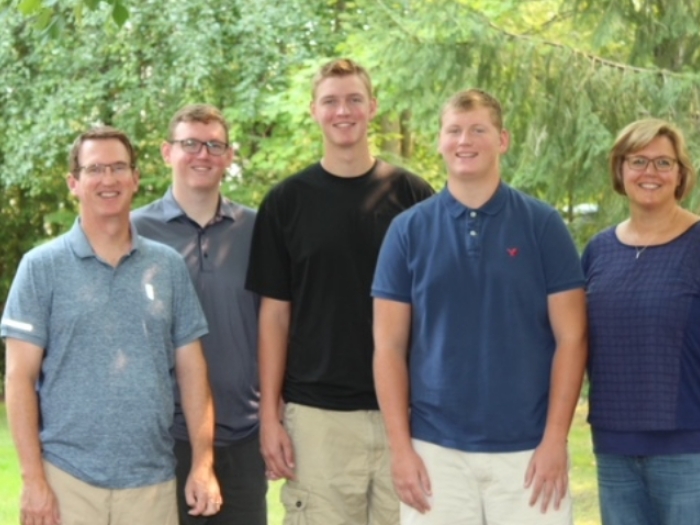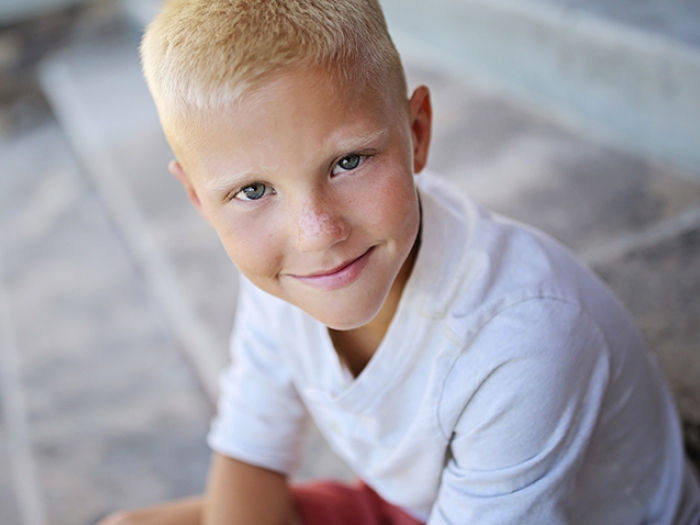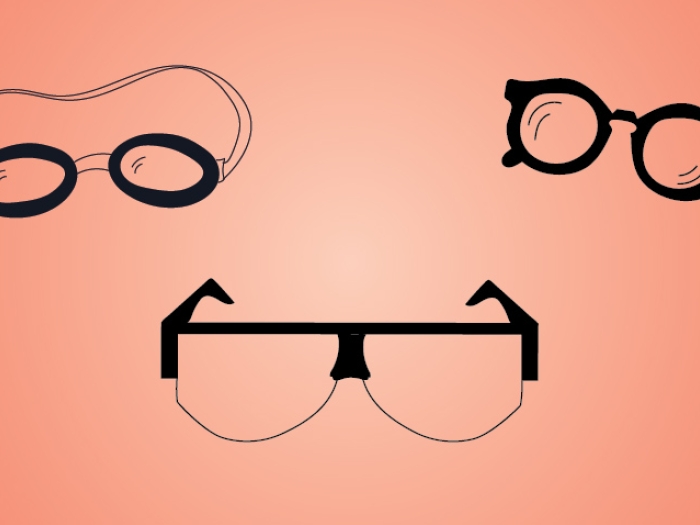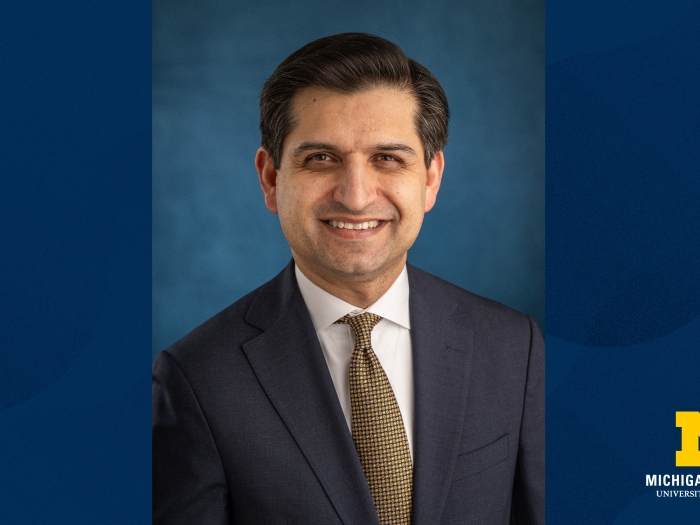Fourth of July firework tips over, hits 10-year-old and robs her of vision in one eye.
10:00 AM
Author |
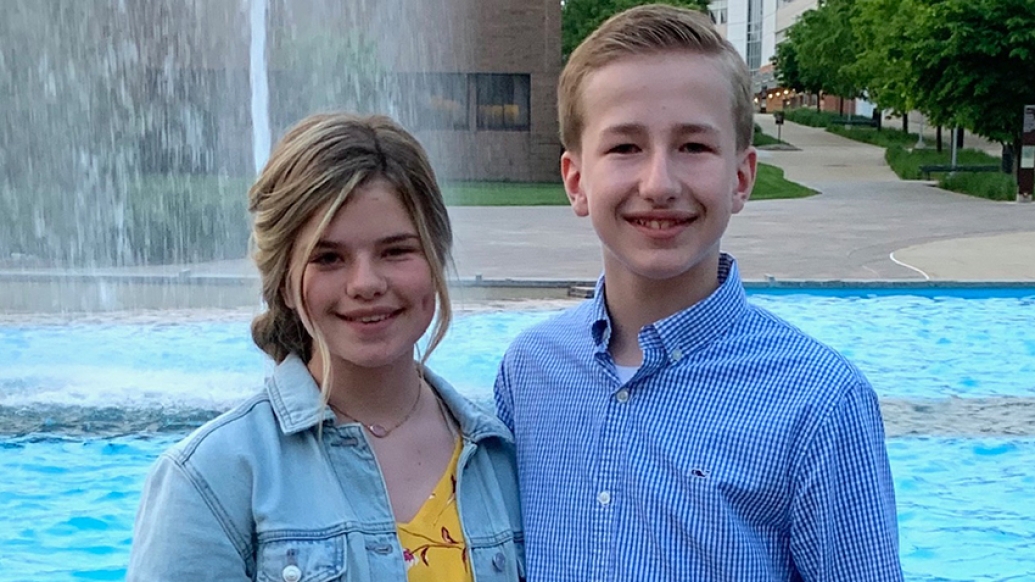
As fireworks rise sky high around the Fourth of July, so do injuries.
Just ask Anne Somers, of Kalamazoo, whose daughter Kaitlin was injured three years ago by a mortar-type firework, which had tipped over, sending the firework into the child's eye and face.
The blast knocked 10-year-old Kaitlin out of her camping chair and on to the driveway where she'd been sitting with neighbors to watch the fireworks display. She says she realized the firework had hit her when she covered her eye and there was blood everywhere.
LISTEN UP: Add the new Michigan Medicine News Break to your Alexa-enabled device, or subscribe to our daily updates on iTunes, Google Playand Stitcher.
"Her older brother came running to the house to say Kaitlin was hurt and in no time we heard sirens," says Somers, mother to Seth, 18, and twins Kaitlin and Tyler, 13.
The ambulance took Kaitlin to Bronson Hospital. Critical care air transport was considered but it would be another ambulance that raced the girl to University of Michigan C.S. Mott Children's Hospital for emergency surgery by Kellogg Eye Center specialists.
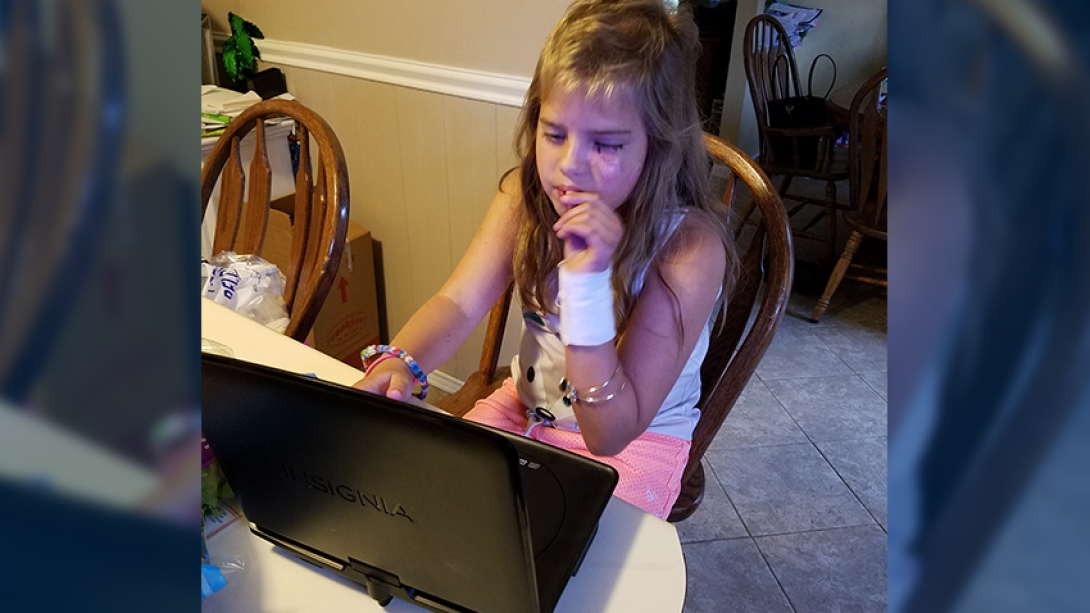
When things go wrong with fireworks it can be catastrophic, which is often: Last year 9,100 fireworks injuries were treated in U.S. hospital emergency rooms.
SEE ALSO Watch Out for These 5 Summer Eye Dangers
More than one-third were children under age 15, and parts of the body most often injured were hands and fingers; legs; eyes; head, face and ears; and arms, according to the Consumer Product Safety Commission.
It's not just airborne and explosive fireworks that pose a danger. Sparklers burn at around 2,000 degrees, which is hot enough to melt metal.
"I have wanted to share Kaitlin's story to tell and show people how dangerous it is to light fireworks at your own house," Somers says.
Kaitlin arrived at Mott in the early hours of July 4 where Kellogg's pediatric eye specialists went to work to save her left eye.
The firework burned the girl's eye inside and out, and left behind debris and blast residue. There were burns around her eye and to her face, her mother says, and cuts on her hands and burns on her wrists.
MORE FROM MICHIGAN: Sign up for our weekly newsletter
Brenda Bohnsack, M.D., Ph.D., a pediatric ophthalmologist, and Cagri Besirli, M.D., Ph.D., who specializes in children's retinal diseases, played a huge role in preventing Kaitlin's eye from being removed. The surgeons saved the outer globe.
But the fact remains: Kaitlin lost vision in her left eye.
Kellogg ocularist Greg Dootz customized a scleral shell for Kaitlin to wear, and plastic surgeon Steven Kasten, M.D., has taken on the task to repair and diminish scars under her eye.
Yearly checkups with Bohnsack are needed to monitor her remaining vision.
SEE ALSO 6 Need to Know Safety Tips for Summer Holidays
Kaitlin and her medical team, which includes burn specialists, have earned praise for their commitment to the girl's recovery.
"I am so proud of Kaitlin," says Somers, who just four months before Kaitlin's accident had to support her family after the death of her husband Brian.
"She has never once said 'I can't do that' or 'I only have one eye' as an excuse.
"She is a beautiful, smart and typical teen. I am sad that she no longer wants to play softball or basketball, because she was very, very good in those sports before her injury. However, she has so many talents and strengths that I have no doubt she will continue to soar in other ways."
If a fireworks eye injury occurs, the American Academy of Ophthalmology outlines what to do:
-
Seek medical attention immediately.
-
Do not rub the eye. Rubbing may make the injury worse.
-
Do not attempt to rinse the eye.
-
Do not apply pressure to the eye.
-
Do not remove objects from the eye.
-
Do not apply ointments or take pain medication before seeking medical health.

Explore a variety of healthcare news & stories by visiting the Health Lab home page for more articles.

Department of Communication at Michigan Medicine
Want top health & research news weekly? Sign up for Health Lab’s newsletters today!

